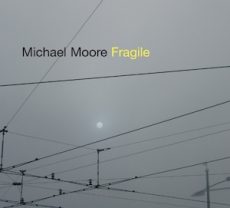
Daily Dose Of Jazz…
Michael Moore was born December 4, 1954 and raised in Eureka, California. He studied music at Humboldt State and in 1977 graduated from the New England Conservatory of Music, where he studied with Jaki Byard and Gunther Schuller, and was a classmate of Marty Ehrlich. He played in a variety of musical contexts, especially those in support of theatre and dance groups.
By 1982 he was a regular member of Misha Mengelberg’s Instant Composers Pool and had moved to Amsterdam. He was also a member of Georg Gräwe’s Grubenklang Orchester. Michael is one-third of the Clusone Trio with cellist Ernst Reijseger and drummer Han Bennink. Originally meant only to play a single date at a festival in Clusone, Italy, the trio toured irregularly for several years and recorded six albums, including one of freely-interpreted Irving Berlin compositions.
His debut recording as a leader was in 1992 but it was with 1994’s Chicoutimi that he began to earn recognition as a composer. The drummerless trio on this album had Fred Herschon piano, and bassist Mark Helias was inspired by the duo recordings of Lee Konitz and Gil Evans.
He put together a jazz quintet in 2005 and the album Osiris. In 2013, he performed with InstanPool, a group of international musicians making improved music and occasionally playing a composition.
Saxophonist and clarinetist Michael Moore, who has recorded twenty-two albums as a leader, continues his journey in performing and recording.
More Posts: bandleader,clarinet,history,instrumental,jazz,music,saxophone
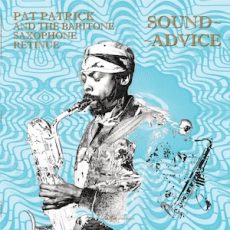
Daily Dose Of Jazz…
Pat Patrick was born Laurdine Kenneth Patrick Jr. on November 23, 1929 in East Moline, Illinois, to Laverne and Laurdine Kenneth Patrick. He first learned piano, drums, and trumpet as a child, and then switched to saxophones. He attended and studied music at DuSable High School in Chicago, Illinois where he met fellow students and future musicians bassist Richard Davis and saxophonists John Gilmore and Clifford Jordan. While still in school he was baritone saxophonist for the Regal Theater’s house band.
1949 saw Pat enrolled at Florida Agricultural and Mechanical University, but soon returned to Chicago to study at Wilson Junior College. Around 1950 he first played in one of Sun Ra’s bands as part of a trio and occasionally in Sun Ra’s Arkestra. By 1954 he became a regular member of the band. He moved to New York City in 1961, spent several years in the Arkestra’s communal residences in the East Village and Philadelphia, Pennsylvania.
He went on to play and record with John Coltrane, Blue Mitchell, Mongo Santamaría, Thelonious Monk, and Babatunde Olatunji. In 1972, Patrick co-founded the Baritone Saxophone Retinue, which featured Charles Davis and recorded two albums for Saturn Records.
He toured Europe with Sun Ra in 1970 and 1976, and was part of some other Arkestra performances in that decade, but he also devoted time to teaching at the State University of New York at Old Westbury.>
Baritone and alto saxophonist, bassist, flutist, percussionist and composer Pat Patrick, who is known for his 40-year association with Sun Ra, died from leukemia in Moline on December 31, 1991.
More Posts: bandleader,bass,composer,flute,history,instrumental,jazz,music,percussion,saxophone
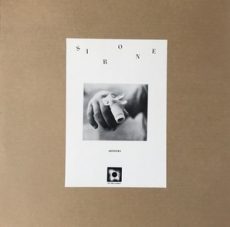
Daily Dose Of Jazz…
Norris Jones, better known as Sirone, was born September 28, 1940 in Atlanta, Georgia. He worked in Atlanta late in the 1950s and early in the 1960s with “The Group” alongside George Adams. He recorded with R&B musicians such as Sam Cooke and Smokey Robinson.
In 1966, in response to a call from Marion Brown, he moved to New York City, where he co-founded the Untraditional Jazz Improvisational Team with Dave Burrell. He also worked with Brown, Gato Barbieri, Pharoah Sanders, Noah Howard, Sonny Sharrock, Sunny Murray, Albert Ayler, Archie Shepp, and Sun Ra, as well as with John Coltrane when he was near the end of his career.
He co-founded the Revolutionary Ensemble with Leroy Jenkins and Frank Clayton in 1971. Jerome Cooper later replaced Clayton in the ensemble, which was active for much of the decade. The 1970s and early 1980s saw Sirone recording with Clifford Thornton, Roswell Rudd, Dewey Redman, Cecil Taylor, and Walt Dickerson.
In the 1980s, he was a member of Phalanx, a group with guitarist James “Blood” Ulmer, drummer Rashied Ali, and tenor saxophonist George Adams. From 1989, he lived in Berlin, Germany, where he was active with his group Concord with Ben Abarbanel-Wolff and Ulli Bartel.
Bassist, trombonist, and composer Sirone, who was involved in theater, film, and was a practicing Buddhist, died in Berlin, Germany on October 21, 2009, at the age of 69.
More Posts: bandleader,bass,composer,history,instrumental,jazz,music,trombone
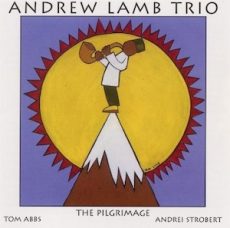
Daily Dose Of Jazz…
Andrew Lamb was born on August 26, 1958 in Clinton, North Carolina and raised in Chicago, Illinois and South Jamaica, Queens, New York. Having studied with AACM charter member Kalaparusha Maurice McIntyre, he came into New York City’s avant-garde community during the 1970s, becoming an active presence in the Bedford-Stuyvesant arts world and winning a Brooklyn Arts Council grant.
1994 saw him leading a session for Delmark, composing all the pieces on Portrait in the Mist, which featured vibraphonist Warren Smith, bassist Wilber Morris, and drummer Andrei Strobert. Lamb has since recorded duets with Warren Smith, and made a trio recording with Eugene Cooper and Andrei Strobert.
In 2003 released Pilgrimage on CIMP with Tom Abbs and Andrei Strobert, and with his group The Moving Formas released Year of the Endless Moment. As a leader he has recorded five albums beginning with 1994’s Portrait In The Mist, with his latest The Casbah Of Love in 2018 on Birdwatcher Records
Saxophonist and flautist Andrew Lamb, who leads his own ensembles and has been a part of Alan Silva as well as Cecil Taylor’s big bands, continues to perform and record.
More Posts: bandleader,flute,history,instrumental,jazz,music,saxophone
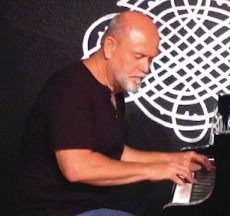
Daily Dose Of Jazz…
D C DowDell was born on August 9, 1951 in Southern California and studied Music Education at UCLA and earned a Masters of Music Composition at University of North Texas. He has been influenced by Bill Evans, Keith Jarrett, Kenny Baron and Herbie Hancock. His style and piano technique blends the fine inner voicings of modal with the highly energetic impressions of the avante garde.
He has appeared with Bobby Vinton, Marilyn McCoo and Rosemary Clooney just to name a few. His passion for jazz led him to composing and arranging charts for top vocalists, solo instrumental artists and orchestra. His influences are Gil Evans, Bob Florence and George Russell.
Pianist D C DowDell moved to Ocean Beach, California where he continually plays locally with jazz ensembles and teaches jazz theory and composition at A Passion for Jazz! Music Studios. He first published his Basic Musicianship in 1993, a primary music reference and theory text.
More Posts: arranger,bandleader,composer,educator,history,instrumental,jazz,music,piano




